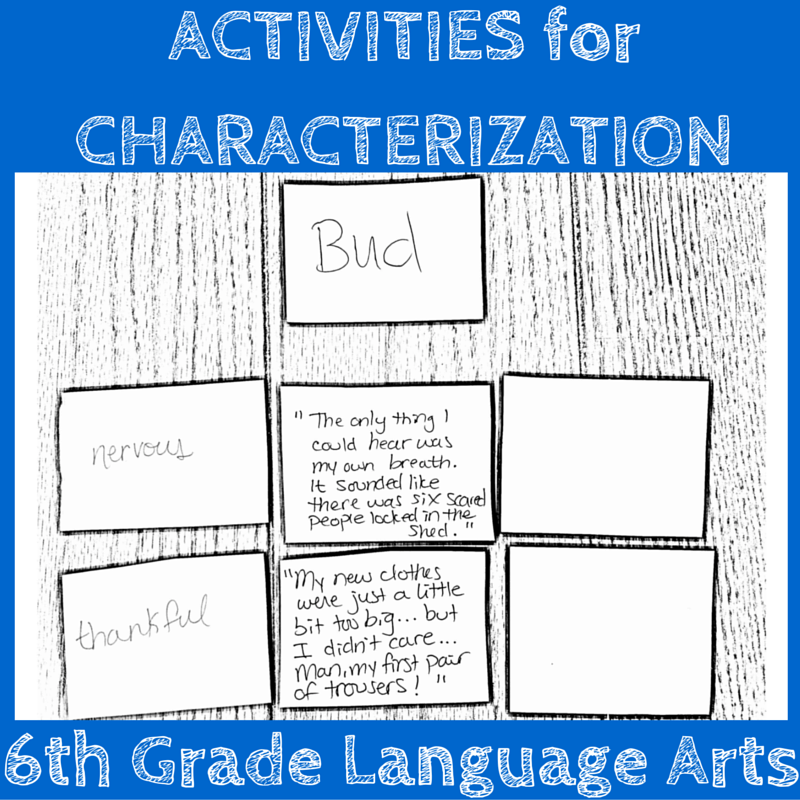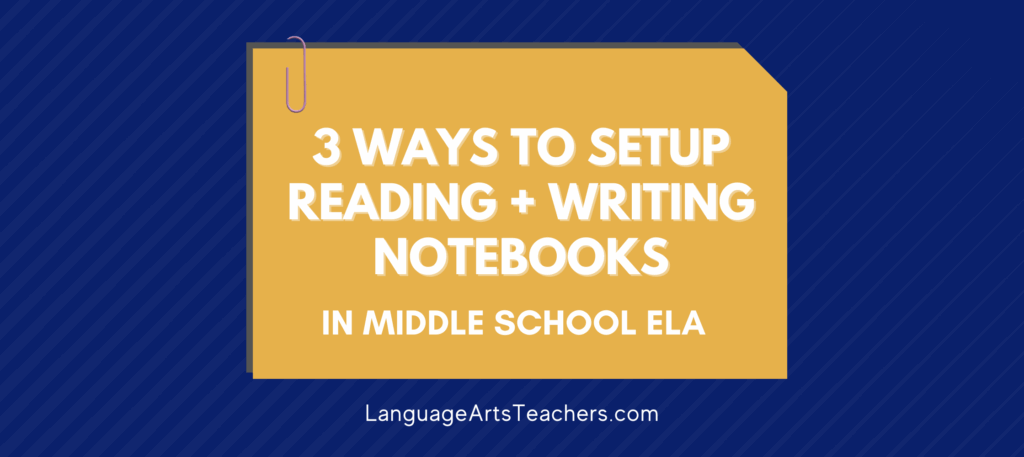Teaching Characterization in 6th Grade ELA
How Writers Show Characterization
-
appearance
-
inner thoughts & feelings
-
outer actions & speaking
-
what others say about that characters
-
how others treat that character
Terms to Know & Teach
-
character traits
-
character attributes
-
protagonist / antagonist
-
direct / indirect characterization
-
static / dynamic characters
-
conflict (internal & external)
Types of Characterization
PHYSICAL DETAILS
Describe what the character looks like (draw or sketch).
How does the character feel about they way he looks? Explain the answer in your own words and then find the text evidence (quote) to prove it!
What do the character’s thoughts or actions have to do with the way he looks?
Does the character become physically stronger or weaker in the story?
INTELLECTUAL DETAILS
What does the character know a lot about?
What is something smart he does? Or not so smart that he does?
How do the character’s thoughts change throughout the story?
What causes the character to change his mind or his thoughts?
EMOTIONAL DETAILS
Explain how the character feels as the story begins.
What happens to change how the character feels?
Who is really in control of the character’s feelings?
How does the character feel during times of conflict in the story?
SOCIAL DETAILS
Explain how the character does or does not get along with others in the story.
Who in the story seems to understand this character best (why?)?
How does the character feel about the rest of society in the story?
In what way does the character sort of remind you of yourself a little bit?
DETAILS ABOUT BELIEFS & VALUES
We all have a certain amount of morals and values. What seem to be this character’s morals and values?
Do the character’s decisions in the story actually go along with his morals and values?
In what way do the character’s beliefs about things make it tough for him in the story?
What do the other characters in the story think about his beliefs?
Activities to Develop the Skills
-
Be the character
PROMPT:
Think about what really happened at lunch today. Now write about it in the first person point-of-view from the perspective of the character in your book. That character’s thoughts won’t be the same as yours because he’ll have his own way of describing things and he’ll feel differently about things than you did. Be creative! Describe your lunch break today in a way that sounds like your character is talking!
2. Character Description
-
Write down 10 adjectives that come to mind when you think of your character.
-
Next, write a paragraph that uses any 8 of those 10 adjectives to explain what your character is like.
-
Circle each adjective. Underline the example or situation in the paragraph that proves why you used each adjective.
3. Characterization Pyramid
-
Create a large triangle on your paper that fills the whole page
-
Inside the triangle at the very top, write the character’s name.
-
Then fill in the triangle according to this:
-
2 adjectives describing the character’s appearance
-
3 adjectives describing the character’s inner feelings
-
4 adjectives showing the character’s outer actions or feelings
-
5 adjectives related to what others think of him
-
6 words that tell the main conflict in the story that your character faces
-
7 words that show how your character changed from the beginning of the story to the end of the story (insert image)
-
Extensions: Students can look up text evidence for each term they used (great for partner or small group work). Students can use the pyramid to write a characterization paper (each line of the pyramid can be a different paragraph in the paper, or students can choose one line to write a paragraph about)
4. Character Traits Matching Game
-
Easy! Just do a quick Google search of character traits for 1-3 main characters in the novel you’re teaching, and print them out on paper.
-
Your students can work in small groups on a few of those traits (each group would have all the traits of just one character). That group will locate and copy text evidence from the novel that describes something about the character: what the character said, what the character did, etc.
-
They will copy the text evidence onto separate cards, like index cards.
-
Now each group has a set of cards with character traits (you gave them this) and a set of cards with matching text evidence for each trait (they found this themselves). Enclose the traits and the text evidence for that one character in a baggie.
-
Have groups switch baggies and then pull out the traits and the text evidence. They have to match the correct trait with the correct text evidence to prove that trait. Groups can check each other’s work.






